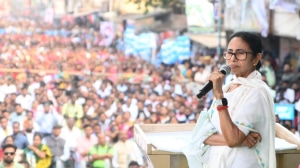Stay updated with the latest - Click here to follow us on Instagram
Maharashtra has highest number of ATMs in country, says RBI
During the financial year 2017-18, the number of ATMs in the state has declined marginally from a year ago, as the total number of ATMs in the country has also declined slightly to 2,22,066 from 2,22,318 in the same period.
 Maharashtra has highest number of ATMs in the country. (File)
Maharashtra has highest number of ATMs in the country. (File)
Maharashtra continues to have the highest number of automated teller machines (ATMs) in the country at the end of financial year 2017-18, according to Reserve Bank of India (RBI) data. The state had 25,651 ATMs. That means more than one out of every 10 cash dispensing machines in the country are located in Maharashtra.
During the financial year 2017-18, the number of ATMs in the state has declined marginally from a year ago, as the total number of ATMs in the country has also declined slightly to 2,22,066 from 2,22,318 in the same period. According to experts, the slight decline in the ATMs in the country is due to “consolidation and re-alignment” of the ATM deployment business post demonetisation.
“There are two factors that have led to a slight decline in the existing ATM count in the country. Post cash crunch, older ATMs were replaced with newer ones and based on the data gathered during demonetisation, ATMs are being re-deployed from places where there are fewer number of withdrawals to places where the ATM withdrawals are more. In a way, 2017-18 has been a year of consolidation and re-alignment of the commercial business,” said Navroz Dastur, managing director, NCR Corporation, India & South Asia, a leading ATM service provider.
Maharashtra was followed by Tamil Nadu, which had 25,277 ATMs at the end of 2017-18 up from 24,653 a year ago. Uttar Pradesh, Karnataka and Gujarat followed the two states to make up the top five.
Even though the government has been trying to push cashless transactions, data shows that people are returning to cash. In April, both the volume and value of cashless transactions were only marginally up from March, even though people have adopted mobile wallet usage and Unified Payment Interface.
Dastur said the penetration of ATMs in the country is still low as compared to the global standards and in the next few years, a surge in growth of ATMs is expected. He said globally there are 350 to 400 ATMs per million people, whereas in India, there are under 200 ATMs per million people.
“With the government’s Jan Dhan Yojana and Direct Benefit Transfer scheme, people in villages and far flung areas will need an access point to withdraw this cash from their accounts. Banks may not be able to penetrate in such places but ATMs can become the end point for cash dispensation in such areas at a cost that will be a fraction of the cost of opening a bank branch,” said Dastur.







